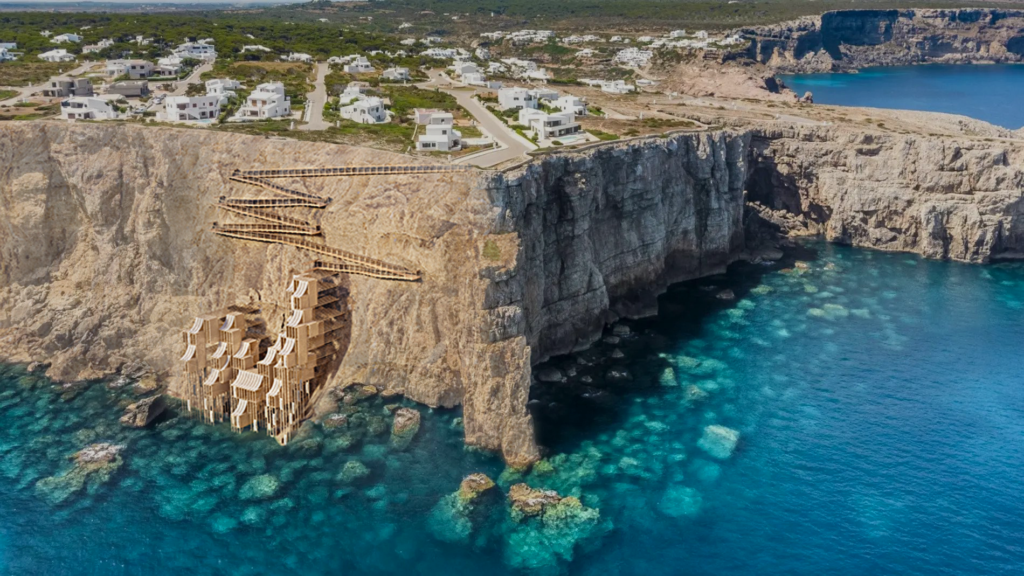Statement
In extreme summer heat, our bodies work overtime to regulate how we feel. It takes massive amounts of energy to maintain a normal and consistent body temperature. All this energy use can cause us to feel tired and sluggish.
It makes it important to have a COOLING system in high temperatures. What is a possible solution in a self-sufficient way, where natural energy does the main job in such a system?

Vernacular Reference

One of the existing examples of cooling systems in vernacular architecture is the Maziara Jar and Mashrabiya in Egypt, where they achieve evaporative cooling as breeze passes over surface of porous water pot, allowing warm air to get cooled before entering the interior.

Site Studies
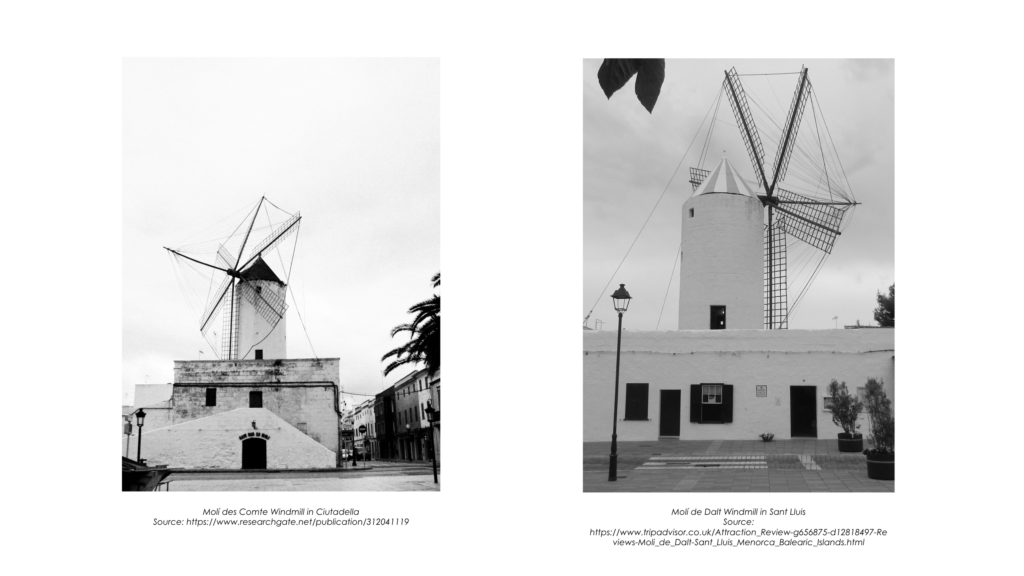
Could evaporative cooling be a possible solution to our given site in Menorca? The flow of air is an important factor of the system. From the existing examples of local windmills, we can tell that wind is an important factor that engages in the architecture of Menorca.

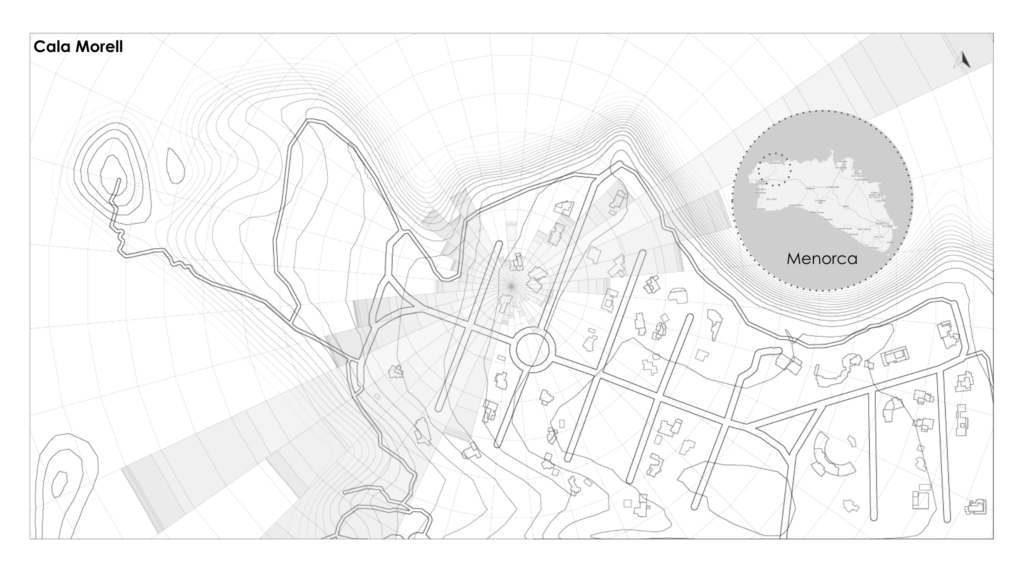
In Menorca, the wind mainly comes from the north and northeast. If we want to do evaporative cooling, the access to water is another important factor. So we decide Cala Morell to be our site, as it is on the north of Menorca and it is by the sea.

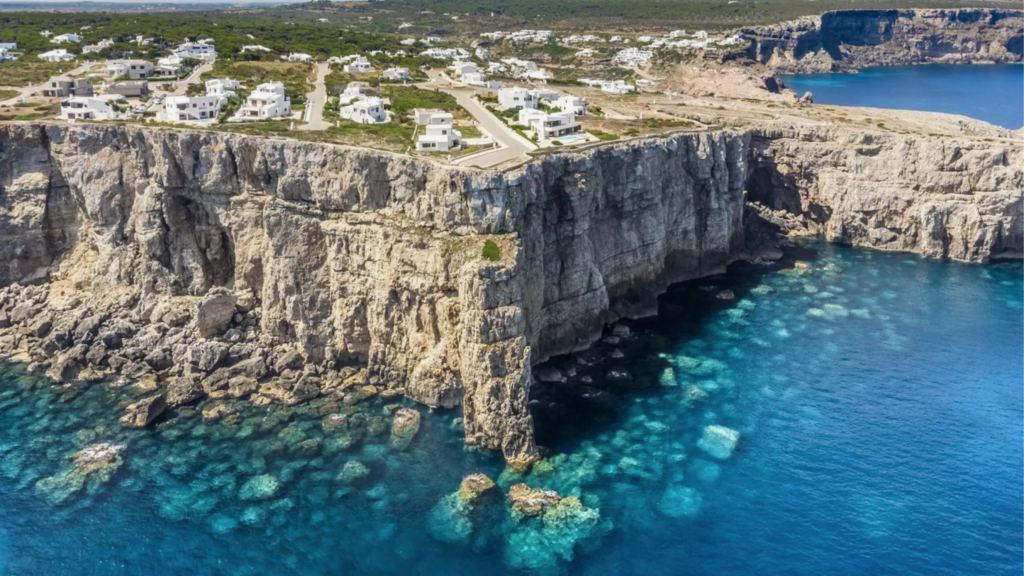
A cliff surface is a good site for an evaporative cooling system, as it allows easy accesses to water, strong wind hits, open views of the sea, and vertical proliferation possibilities.

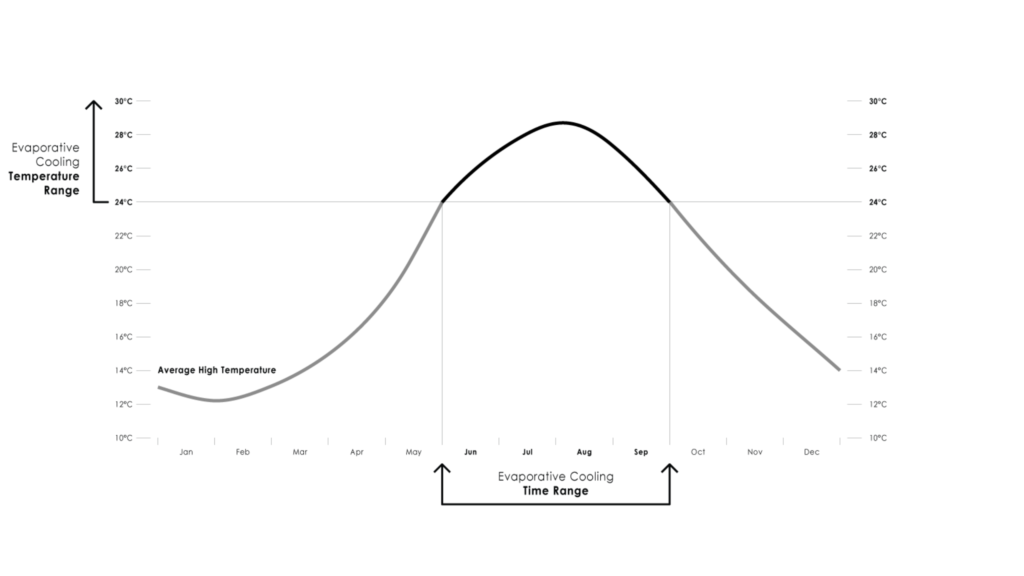
In Cala Morell, the months when a cooling system is wanted is from June to September in summer time, when the average high temperature ranges from 24 to 30 degrees Celsius.

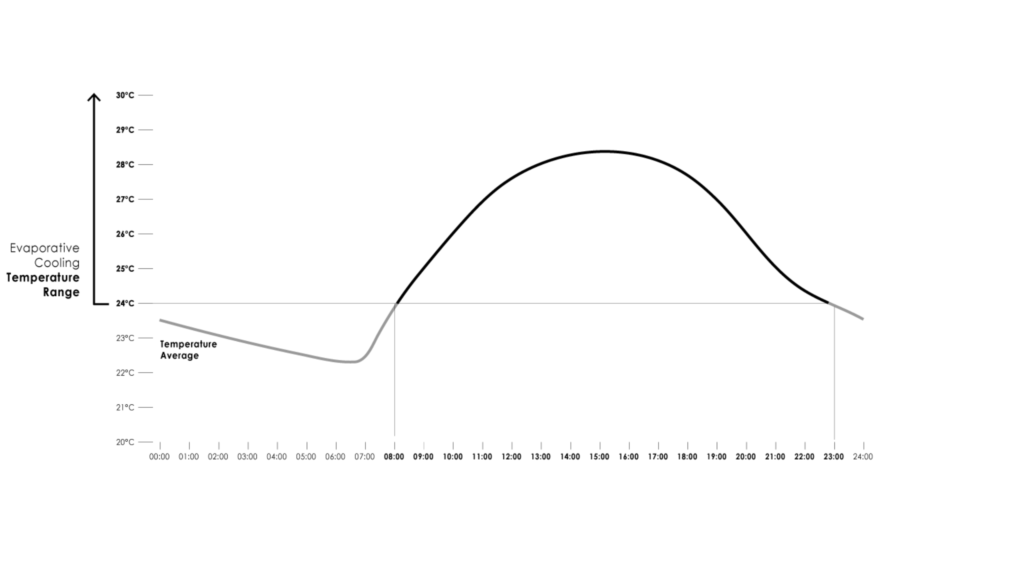
If we zoom in to the temperature of a typical summer day in Cala Morell, we can tell the hours when a cooling system is wanted. The period of time would be from 8 in the morning to 11 at night, when the temperature is above 24 degrees celsius.


But since evaporative cooling increases the humidity of the air, it is an ideal cooling system only when the humidity is not too high, that is below 60%. So the hours would be from 10 in the morning to 8 in the evening.

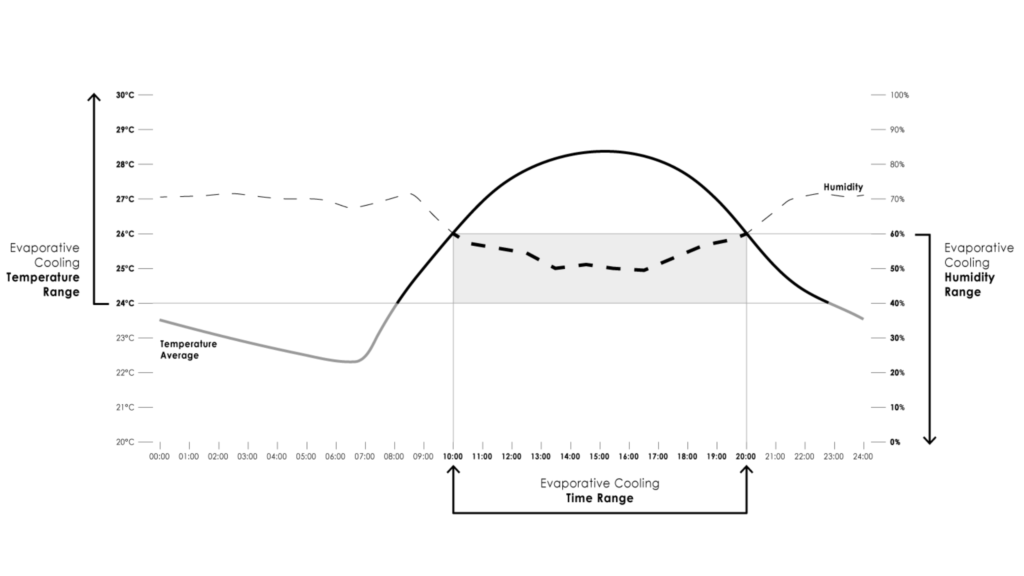
When we put the temperature and humidity of the same day together, we can tell that the ideal time to do evaporative cooling is from 10 in the morning to 8 in the evening, during which the temperature is above 24 degrees celsius and the humidity is under 60%.

Smallest Architecture
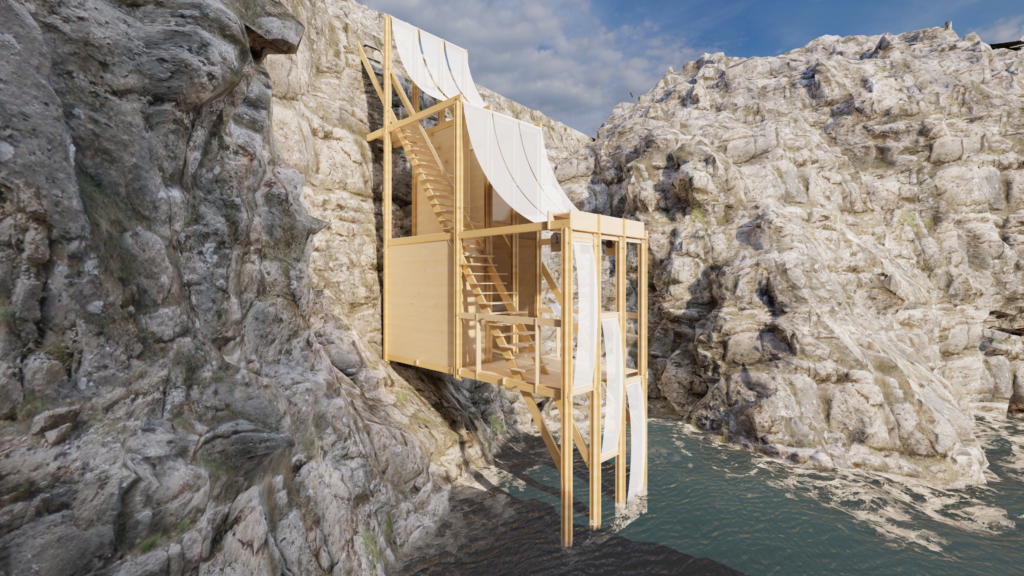
We continue our study by proposing a single unit on a nearby site with a lower cliff. The fabric facade is for going up and down to catch the sea water to do evaporative cooling. The diagonals act as the structure and also the stairs for entering. An isolatable cabin is built inside as the living space. The roof uses the same fabric for shading.

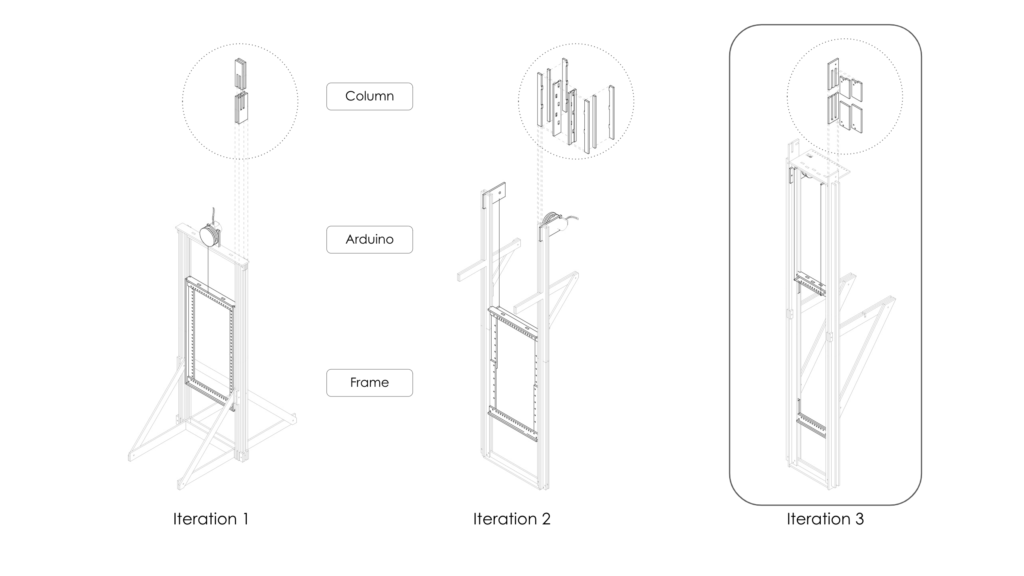
As the main element of our proposal, we find out that the best way to construct the panel would be to have easily constructible columns, to place the Arduino on the side to hide the wires, and to have a flexible frame to save materials while remaining the fabric size large.

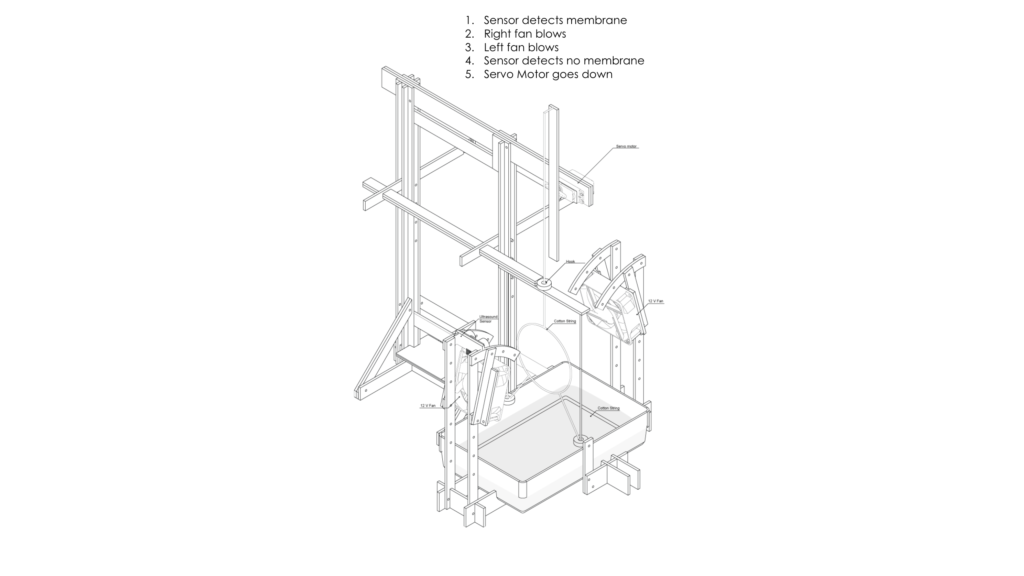
We study how a membrane reacts to wind and the act of catching water through our device . From here, we realise that we need an elastic fabric for our panel, so that it won’t be deformed because of the wind.

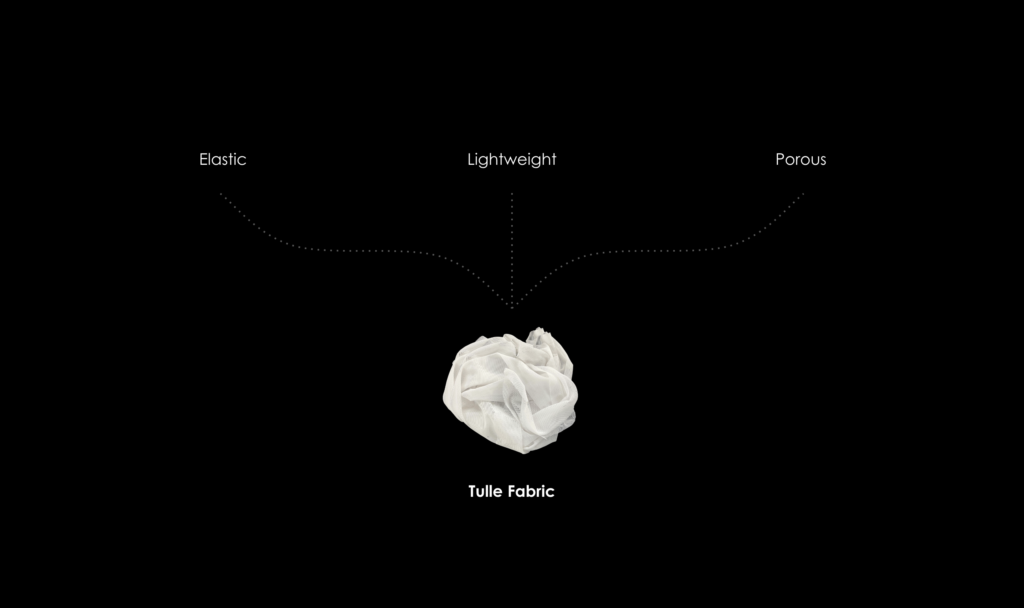
Besides being elastic, the ideal fabric needs to be porous as well, so that it can catch and evaporate water. It also needs to be lightweight for easy movements. So the ideal solution would be tulle fabric.

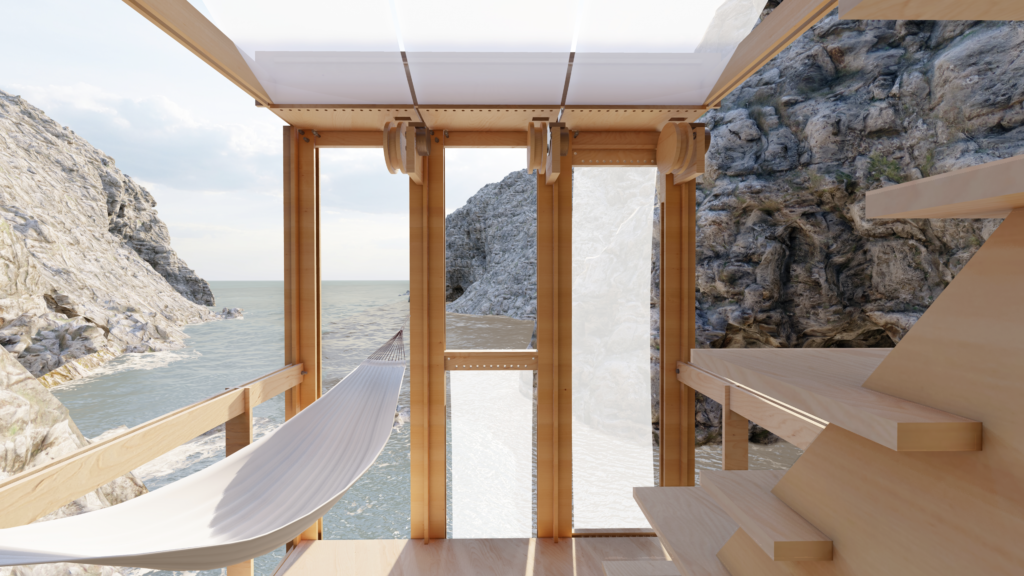
In a summer afternoon, when the resident lays down in the terrace under the sun that passes through the roof fabric, the wind blows through the wet facade fabric, allowing the resident to enjoy the sea view with cooled air.

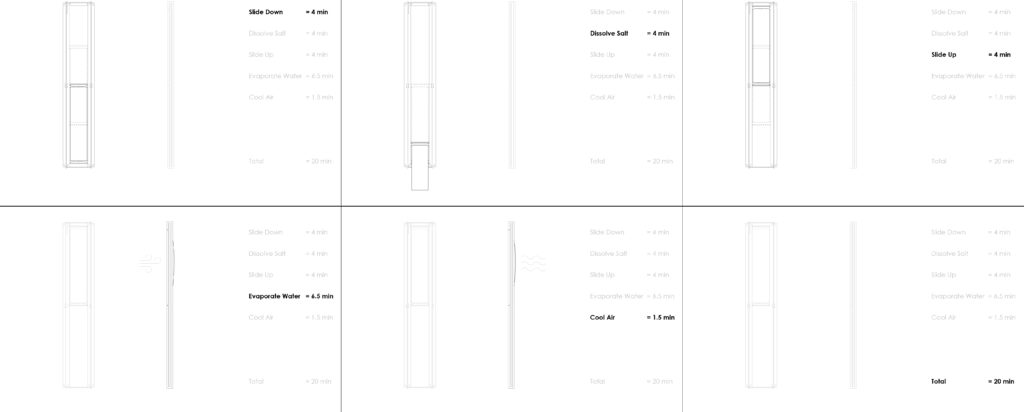
For each panel, one loop takes 20 minutes. It goes through the process of sliding down, dissolving previous salt and catching new water, sliding up, being blew by wind to evaporate the water, and waiting for the air to be cooled, then a new loop starts. All these numbers come from our scientific research and tests of prototypes.


To keep the single unit to a minimum size, we make the height of one floor 2.4 meters and the width of each panel 70 centimetres, that’s the width of the diagonal stairs. A Net is used as the bed on the second floor to give the resident a complete fabric experience. As you can see in the section, the wind blows through the cabin, and the fabric facade is going up and done to do the evaporative cooling.

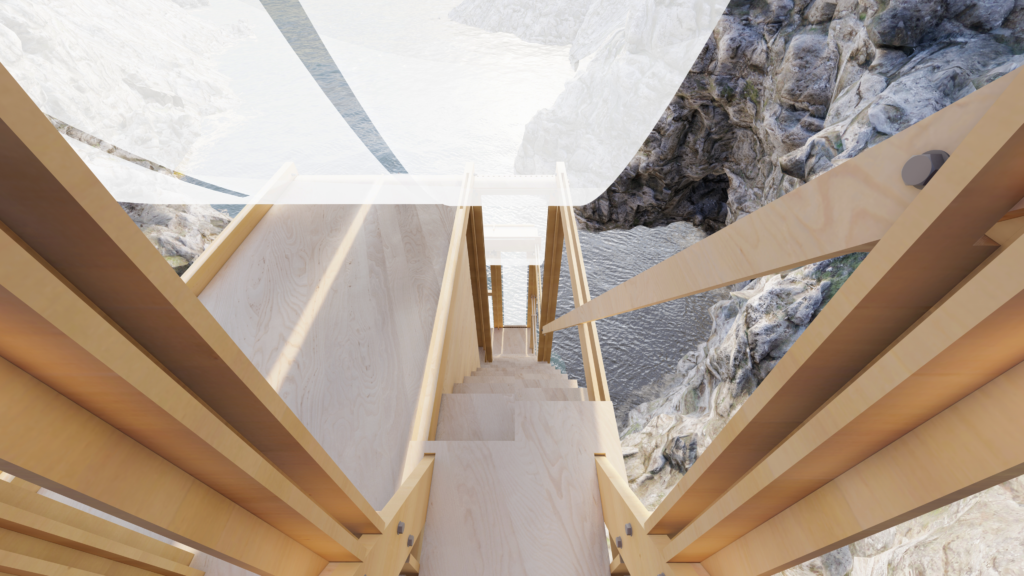
As the resident goes down the diagonal stairs from the entrance, the roof fabric is moving along the breeze welcoming the resident to get closer.


The cabin for the living space is isolated, so that it is open in summer to allow cool air to enter and hot air to leave, but what about winter, when evaporative cooling is not needed, then the sliding doors are closed to avoid the inside getting cold.

So, our answer is that, yes, evaporative cooling could be a possible solution for a self-sufficient cooling system, where we use natural resources including wind and water.

1:5 Model
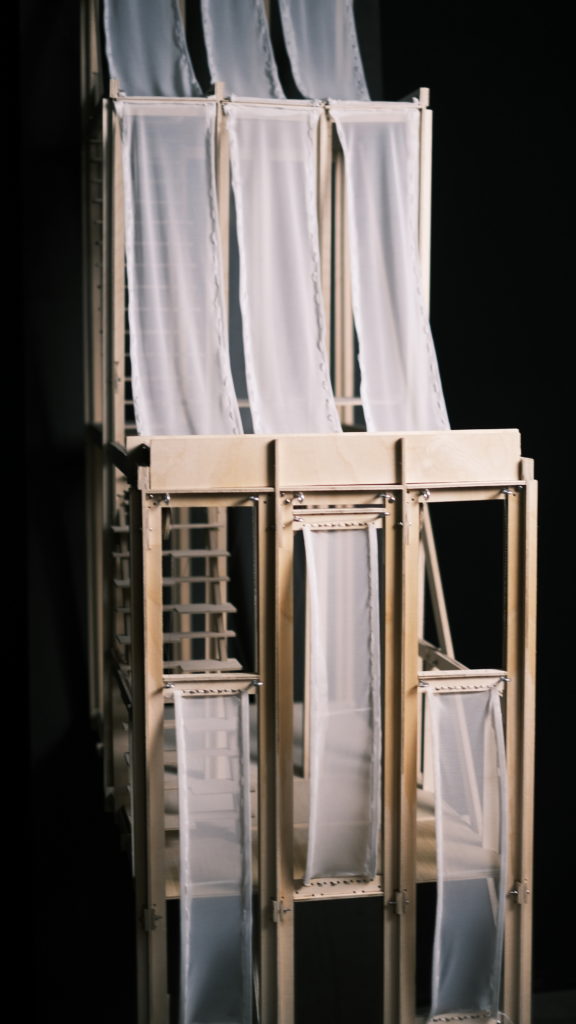
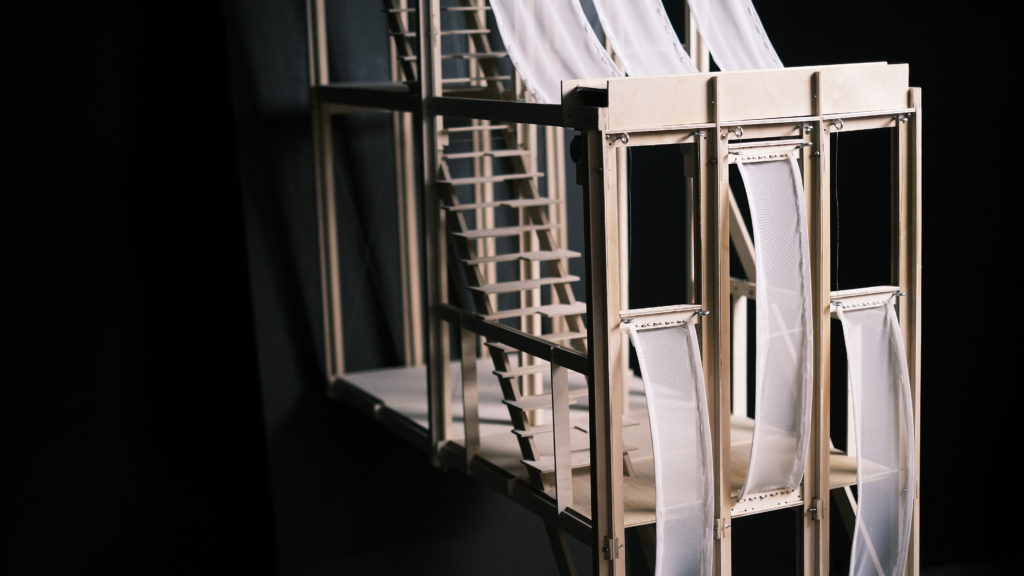

Self Sufficient Buildings
What are the possibilities to expand the single unit into a multi-units resort?
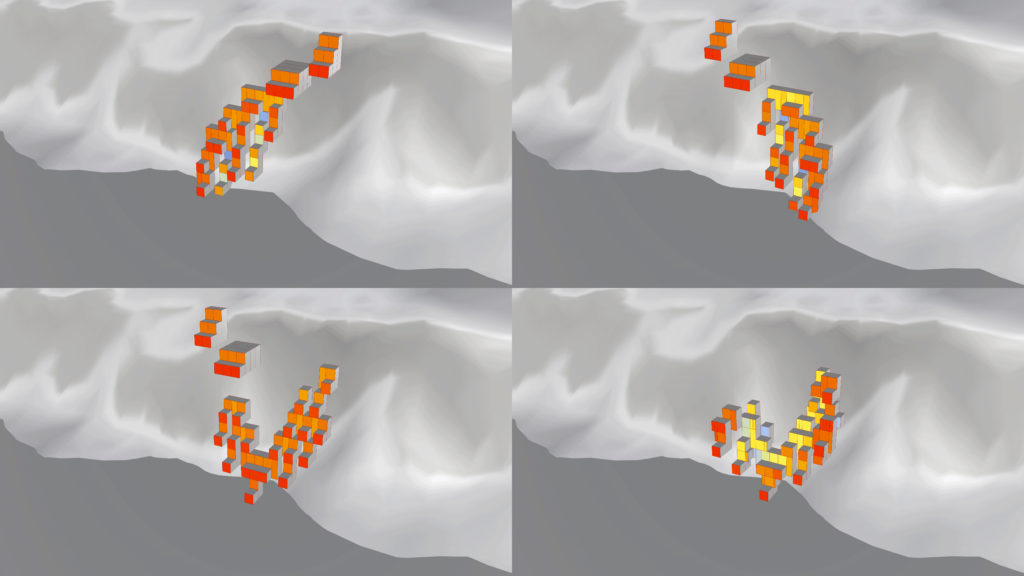
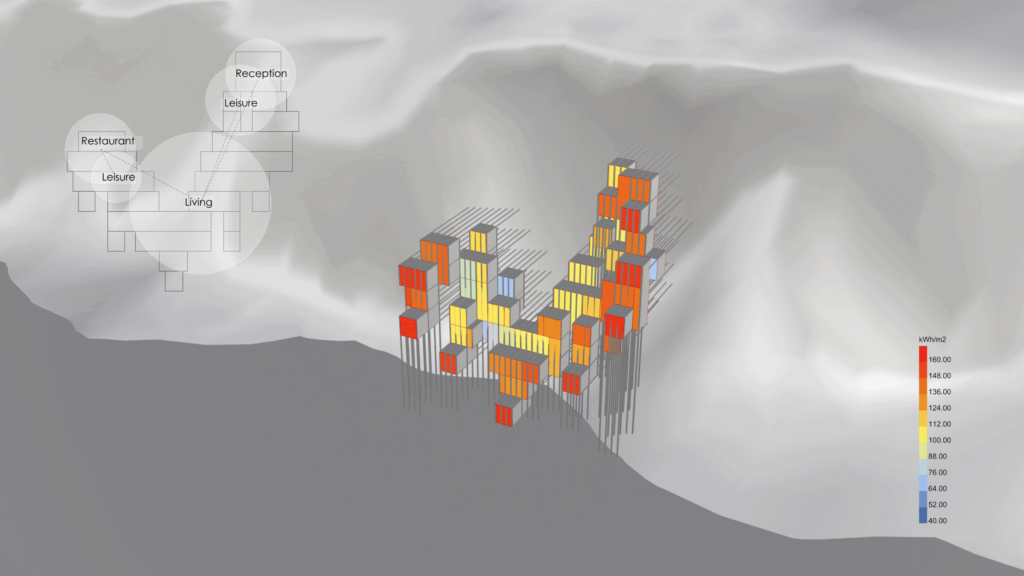
The answer is simple, since our main aim is to provide thermal comfort, we have to consider the form along with the incident radiation hitting the units. We try various options and choose the one with the least overall incident radiation and the one which suits our panel movement strategy. We want the living units with the most radiation to be the ones closest to the water with the shortest rail height, so the cooling loop can repeat more times. So, as we go down the cliff, the units gradually protrude more outwards. Moreover, the west and east public units are protruding to shade the remaining living units reducing their cooling needs within the designated 10 hours cooling span.


In this diagram, we can see that as we go up the cliff, the time taken by a single cooling loop increases obviously due to the increasing rail height; but on the other hand, the possible cooling loop repetitions decrease, and thus shows an inversely proportional relationship.

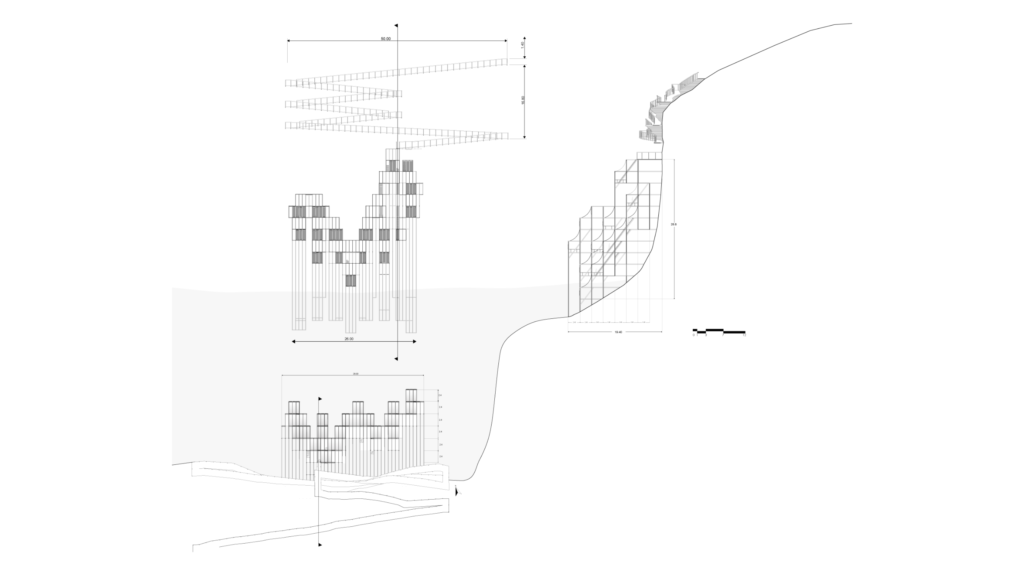
These are our architectural drawings showcasing the complex spatial relation of the units in plan, section and elevation. It also shows that the main access to our project is through a gentle sloped ramp.

